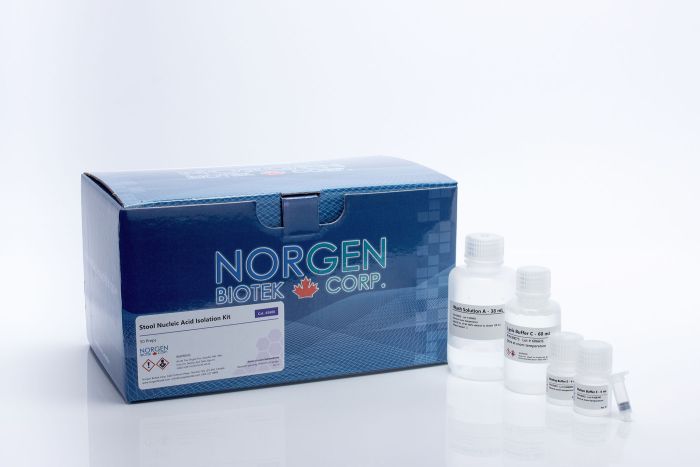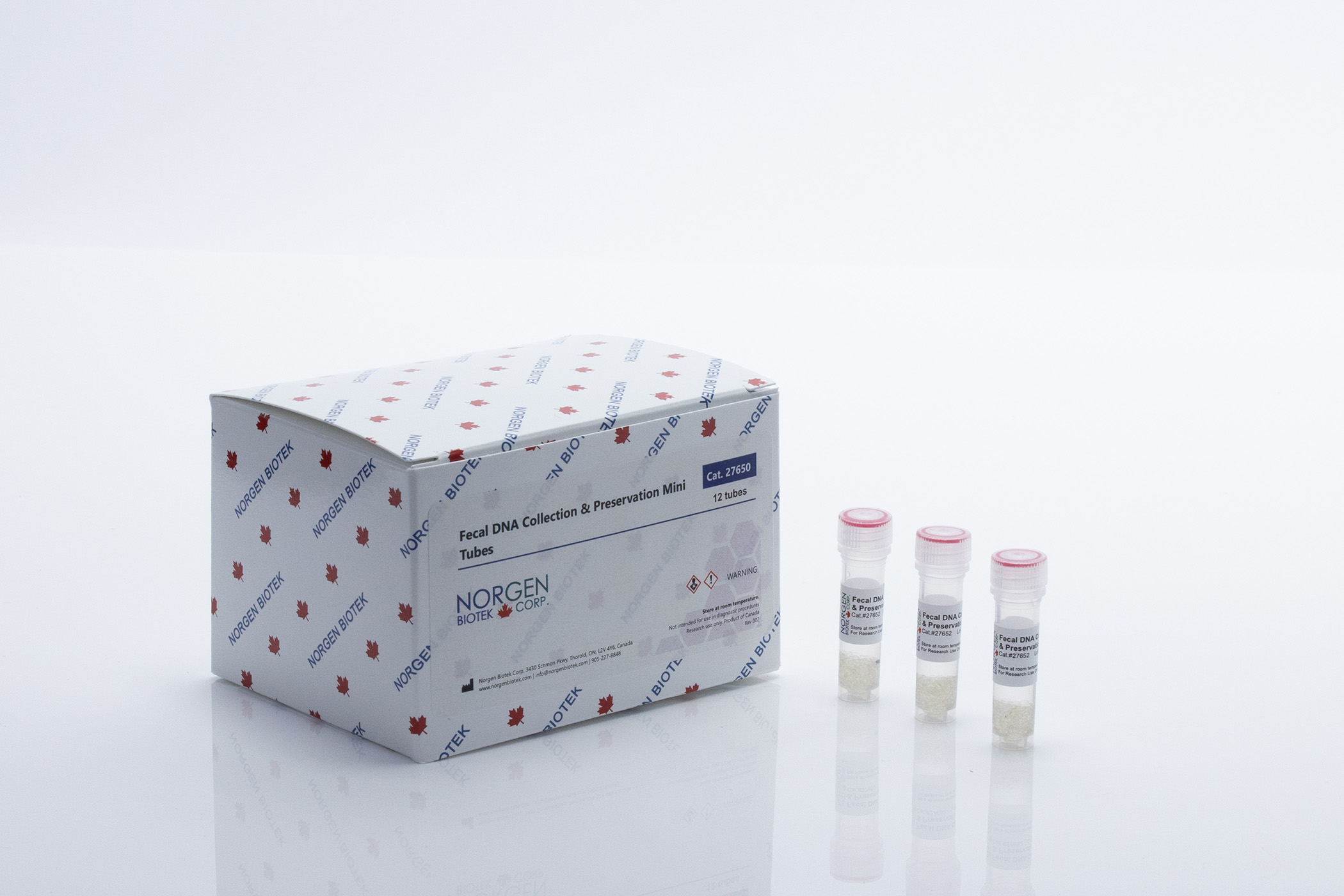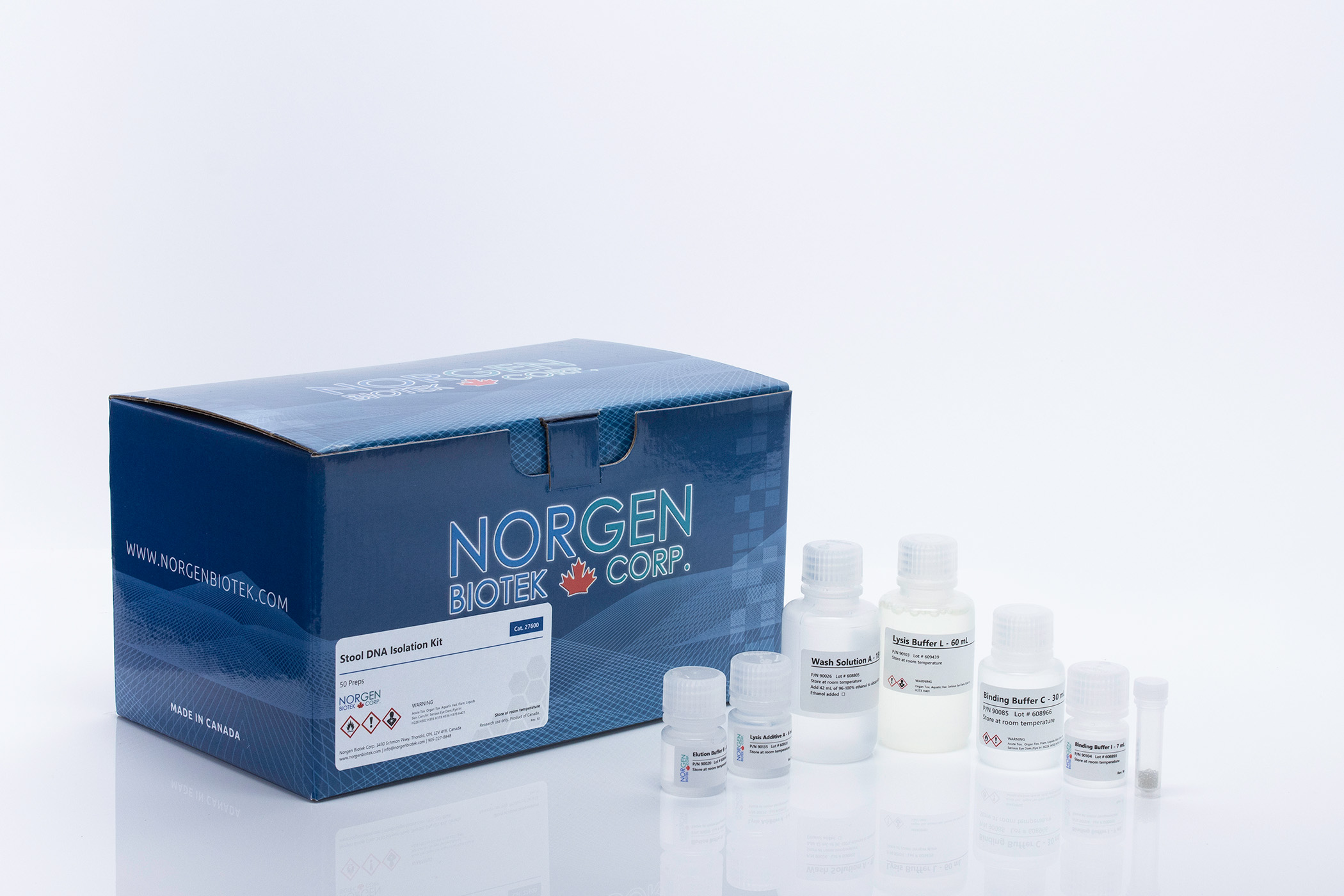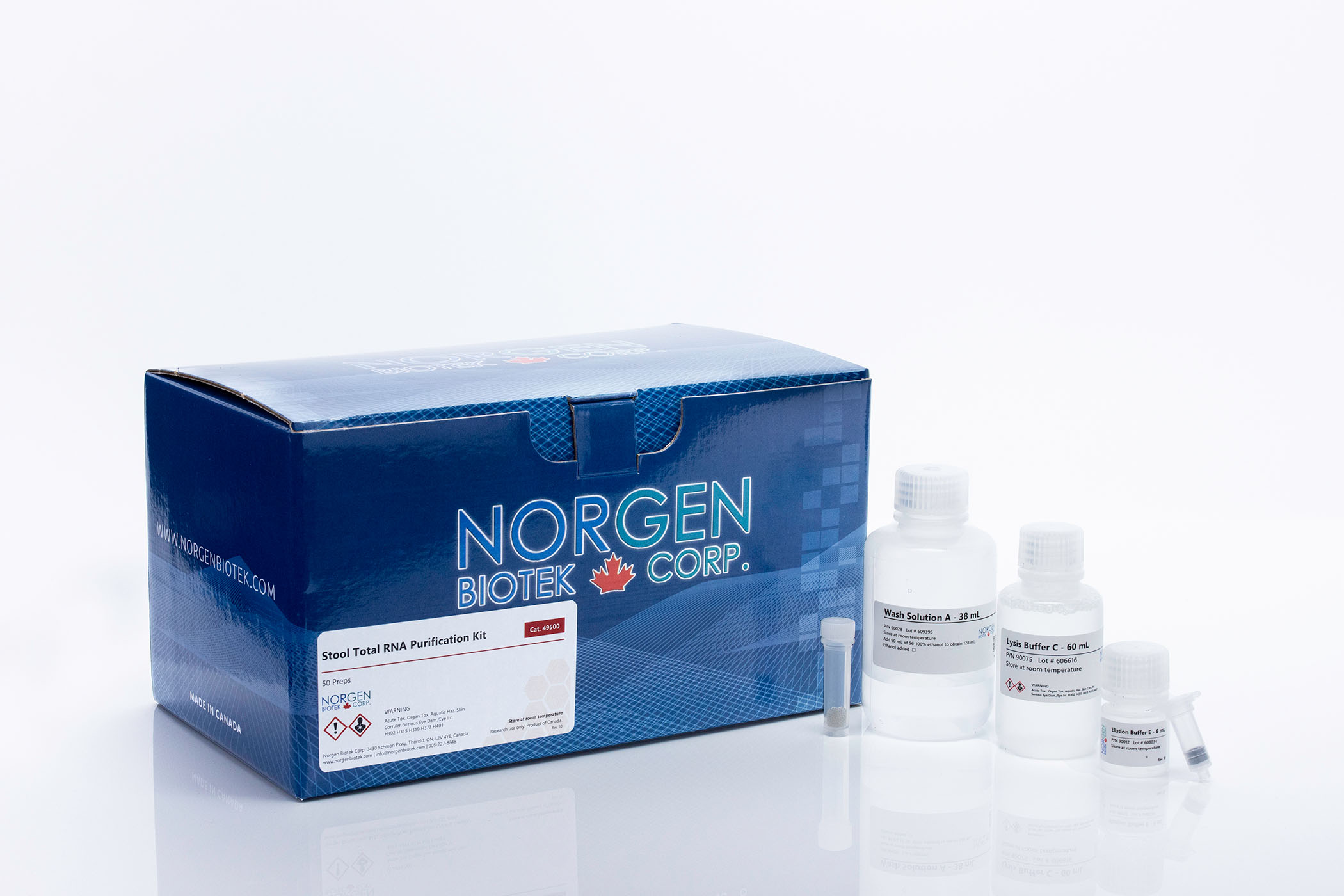Stool Nucleic Acid Isolation Kit


For research use only and NOT intended for in vitro diagnostics.
Stool Nucleic Acid Isolation Kit
Register today to receive an exclusive 15% off* on your first order.
Supporting Data
Figure 1. Total RNA Profile from Different Stool Samples. Total RNA and DNA were isolated from 6 different 200 mg human stool samples using Norgen's Stool Nucleic Acid Isolation Kit. For analysis, 7.5 µL from each 75 µL elution were loaded on 1.2 % MOPS agrarose gel. All six sample showed a good RNA integrity and total RNA profile that includes large and small RNA.
Figure 2. Detection of Bacterial RNA from Stool Samples. Real-time one step RT-PCR analysis (SYBR Green) was carried out to detect the bacterial 16s rRNA expression from six stool samples isolated using Norgen's Stool Nucleic Acid Isolation Kit. The RNA template was treated with DNase I and concentrated with Norgen's RNA Clean-Up and Concentration Kit (Cat# 23600, 43200). No PCR inhibition was observed from 300 ng of total RNA in 20 µL PCR reaction. Black diamond: negative control, Blue diamond: six stool RNA samples.
Figure 3. Isolation of Genomic DNA from Human Stool Samples. Total RNA and DNA was isolated from 6 different 200 mg human stool samples using Norgen's Stool Nucleic Acid Isolation Kit. For analysis, 10 µL of each 75 µL elution was run on a 1.2% 1xTAE agarose gel. High quality DNA was isolated from all six stool samples. M: Norgen's HighRanger 1kb DNA ladder (Cat. 11900).
Figure 4. Detection of Human DNA from Stool Samples. Total RNA and DNA were isolated from two different stool samples using Norgen's Stool Nucleic Acid Isolation Kit. Two microliters of each elution was used in 20 µL of Norgen's 2X PCR Mastermix spiked with SYBR green (Bio-Rad), using 0.3 µM of primers against GAPDH. As can be seen in the amplification plot, all four samples were successfully amplified, indicating that PCR inhibitors were removed and the kit isolated high quality of DNA from stool. PCR quantification data (A) and melting curve analysis date (B) are shown.
|
Kit Specifications
|
|
|
Maximum Stool Input
|
200 mg
|
|
Type of Stool Processed
|
Preserved, frozen, and fresh stool
|
|
Maximum Column Binding Capacity
|
50 μg
|
| Maximum Column Loading Volume |
650 μL
|
| Time to Complete 10 Purifications |
30 minutes
|
Storage Conditions and Product Stability
All solutions should be kept tightly sealed and stored at room temperature. This kit is stable for 2 years after the date of shipment.
Component | Cat. 45600 (50 preps) |
|---|---|
Lysis Buffer C | 60 mL |
Binding Buffer E | 6 mL |
Wash Solution A | 38 mL |
Elution Buffer E | 6 mL |
Bead Tube | 50 |
Spin Columns | 50 |
Collection Tubes | 50 |
Elution Tubes (1.7 mL) | 50 |
Product Insert | 1 |
Documentation
Comparison of Stool DNA Isolation Methods for Bacterial and Mammalian DNA Detection
Comparative Microbiome Profiles from Fecal Preservation Methods
Comparison of DNA Isolated from Stool Using Norgen’s Isolation Kits Versus Competitor’s DNA Stool Mini Kit
Immediate Viral Inactivation Using Norgen’s Stool Nucleic Acid Preservative
FAQs
Spin Column
Poor DNA or RNA recovery may be caused by one or more of the following:
- Homogenization was incomplete.
Depending on the type of stool, further vortexing with the flat bed vortex or bead beater equipment may be required. However, it is not recommended to increase the vortex time to longer than 5 minutes at maximum speed. Also, ensure that the maximum input of 200 mg of stool is not exceeded, as this may also cause incomplete homogenization. - An alternative elution buffer was used.
It is recommended that the Elution Buffer E supplied with this kit be used for maximum DNA and RNA recovery. - Ethanol was not added to the lysate.
Ensure that an equal amount of 70% ethanol is added to the lysate before binding to the column. Ethanol was not added to the Wash Solution A Ensure that 90 mL of 96-100% ethanol is added to the supplied Wash Solution A prior to use.
If the nucleic acids does not perform well in downstream applications, It may be due to one or more of the following:
- Eluted sample is brown.
Ensure Binding Buffer E is added to the lysate and that it is incubated on ice for 10 minutes prior to spinning down the lysate. Avoid any contact with the pellet or surface residue when collecting the supernatant after the 5 minute spin during sample preparation. - The nucleic acids were not washed three times with the provided Wash Solution A.
Traces of salt from the binding step may remain in the sample if the column is not washed three times with the provided Wash Solution A. Salt may interfere with downstream applications, and thus must be washed from the column. - Ethanol carryover.
Ensure that the dry spin under the "Column Wash" procedure is performed, in order to remove traces of ethanol prior to elution. Ethanol is known to interfere with many downstream applications. - Binding Buffer E was not added to the lysate.
Ensure that the Binding Buffer E is added to the lysate and that it is incubated on ice for 10 minutes prior to spinning down the lysate. - PCR reaction conditions need to be optimized.
Take steps to optimize the PCR conditions being used, including varying the amount of template, changing the source of Taq polymerase, looking into the primer design and adjusting the annealing conditions.




